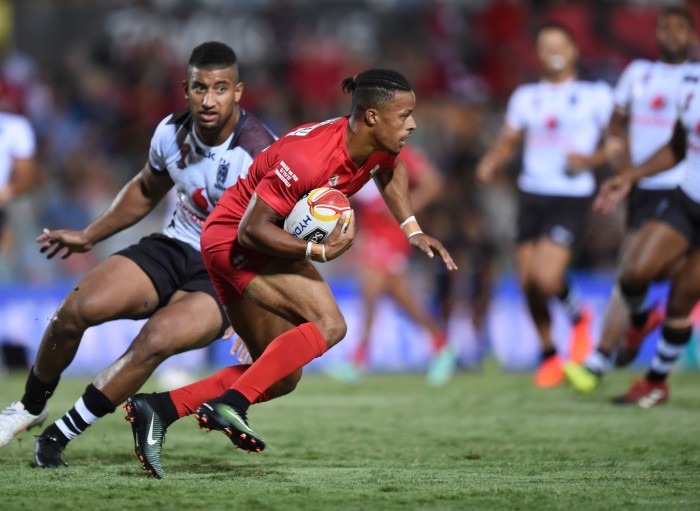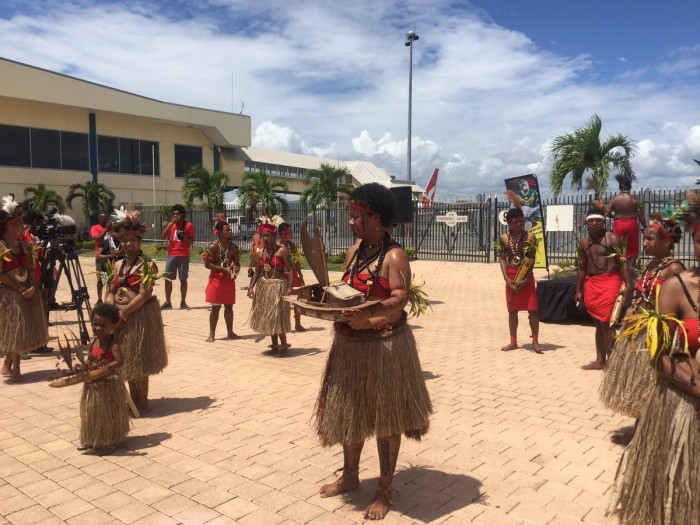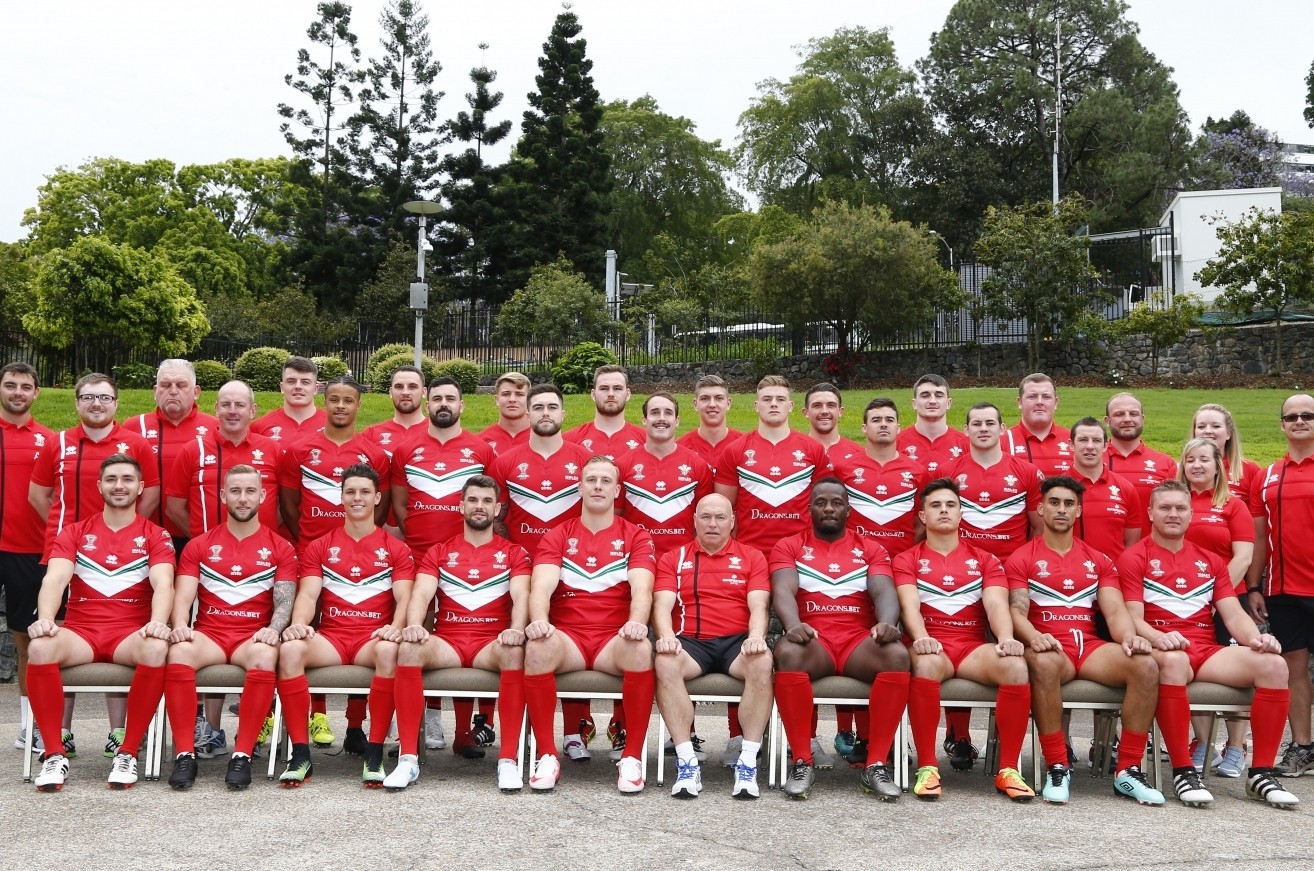Wales Rugby League chief executive Chris Thair speaks to the official website about the recent World Cup and the plans for the future in an extended interview…
“The fundamental lesson we must take from this World Cup is that, when all else is equal, our competitiveness in tournaments is dependent upon the quality of players in our team and, in that regard, we must do better.” That is the verdict of Thair after Wales failed to make it through the 2017 Rugby League World Cup group stages.
In the below interview, he provides a breakdown under the various headings.
THE PROBLEM PROVIDES THE SOLUTION
“The main challenge Wales faced in this World Cup was that the opposition had a higher standard of player compared to ourselves.
“There are two elite club competitions. The NRL, governed by the ARL in Australia, and Super League, run by the RFL in England. Wales, for the majority of our three group games in the World Cup, had three Super League players and no NRL players. The opposition, however, had considerably more players in their 17-man matchday squads from those two competitions: PNG had seven players, Fiji had 16 and Ireland had 11 in their respective games against Wales.
“Wales has a good pool of players. However, eleven of our high end players who have played for Wales in the last four years were unavailable for the World Cup, mainly due to injuries, so we have been unfortunate. Six Super League players in Ben Flower, Calvin Wellington, Gil Dudson, Larne Patrick, Lloyd White and Rhys Evans and five other very good professionals in Anthony Walker, Daniel Fleming, Jacob Emmitt, Oliver Olds, and Robert Massam.
“The answer to how we compete going forward is twofold; we must create a bigger pool of elite Welsh players and then ensure the best players from this pool are making themselves available for Wales. They are simple solutions, but reaching this point won’t be easy without resource and reform within the game.”
OTHER FACTORS
“I believe our coaching, technical, logistical and medical staff is amongst the very best, hence my opening statement about when everything else is equal it is about the players.
“The programme delivered around the mens team is focused, professional and prepares them in the best possible fashion. The balance of work and rest whilst in camp is seemingly good and all the players enjoy being there, love putting on the jersey and give their all. It’s a set up that has brought results before the World Cup as Wales are current European Champions and were two years unbeaten.”

CREATING A LARGER POOL OF WELSH SUPER LEAGUE PLAYERS
“Establishing 20 Super League players eligible for Wales is a credible and realistic end game and we currently have around half that. So, how do we get there?
“The RFL and Super League have certainly given some thought to the international game in the last decade with the admittance of two Welsh clubs, two French and, more recently, Toronto Wolfpack from Canada, so they should be applauded. Improving the competitiveness of the international game was a key factor in accepting these clubs. However, other very important drivers, such as opening up new broadcast revenues and commercial markets, played a major part in the decision making and rightly so, as these are important parts of a complex jigsaw.
“Super League currently consists of 12 clubs, each with an average squad size of 28 players, so that means it has around 336 full time professionals. There are no public statistics as to which nations these players are eligible for. However, I’m more concerned in how this number going forward can be shaped to improve the international game.
“Primarily, Super League is an English competition so, ideally, half of this player base would be eligible for England, but what about the other half which equates to around 170 players?
“Of these 170 “other” players, ideally, 30 players would be French, as this nation already has a club in Super League. Another 60 players could be accounted for by each of the 12 clubs having five players each from anywhere on the planet, as global superstars help the clubs and the competition sell themselves to a wider audience.
“This means we have now accounted for 90 of the remaining 170 players, leaving 80 players that give the sport some opportunity for manoeuvre.
“Could there be enough strategic and regulatory reform that ensured that Super League created 20 fulltime players for each of the Celtic nations in Wales, Ireland and Scotland over the next eight years? I am not advocating creating new clubs in these areas, just utilising the existing English clubs in a better fashion. To do this, we would require the willingness of the clubs, which represents a seismic shift.”
PROFESSIONAL CLUBS
“I found it interesting that the 16-team NRL competition and its underpinning tiers could provide the bulk of the players for nine of the nations in the World Cup: Australasia competition benefitting nations such as Australia, New Zealand, PNG, Samoa, Fiji, Tonga, Lebanon, Italy and, to a lesser degree, the USA. A tenth nation England has also been bolstered by seven players currently plying their trade in Australia; that is half of the starting 13 and a good reason why they stand a chance of winning the 2017 Rugby League World Cup.
“The 12-team Super League and underpinning competitions in Europe provided the bulk of players for five nations: England, France, Ireland Scotland and Wales. A telling fact is that only one team underpinned by this European competition made the quarter finals, showing there continues to be a gap with the southern hemisphere.
“Getting Welsh players to sign for professional clubs is the primary aim of our junior pathway programme in Wales and this will continue moving forward. 2017 has been our most successful ever, with close to 20 Welsh youngsters signing forms with Super League clubs when previously it was around two a year.
“Whilst getting youngsters to sign at professional clubs is a good indicator of future players, there is no guarantee that any of these players will make the first teams and it is from the latter we pick the international team.
“The game could look to regulatory reform that encourages three aspects of player pathway systems at professional clubs to diversify their international playing pool, especially around the Celtic nations. Namely the recruitment of youngsters, promotion into the first team and the retention of players. The salary cap regulations are a good starting point. However, Super League clubs being active in these nations would also assist.”
TWO PROFESSIONAL CLUBS IN WALES
“Part of the answer in attaining 20 Super League players, and it could be a major part if millionaire investors were found, are the two professional clubs that reside in Wales. Both clubs are outside our direct control as a governing body as West Wales Raiders and North Wales Crusaders are independently run by their own board of Ddrectors and don’t play in our competitions. However, we have a close working relationship to exert influence.
“Finding high level investment for these clubs would provide a major step change for the sport in Wales. However, both clubs having a period of stability would also be an improvement on the last few years.
“Discussions also need to be held with North Wales Crusaders around their strategic importance to the game in Wales as I understand not one first team player in their 2018 squad would be eligible for Wales.”

LESSONS FROM PAPUA NEW GUINEA
“I found the sports set up in Papua New Guinea fascinating, as they are a small nation similar to Wales. However, I believe they will be an increasingly strong rugby league nation for many years to come.
“The PNG national team play at the home ground of their main club side the Hunters in the capital city of Port Moresby. The Hunters have operated a full time rugby league squad for four years in the Queensland Cup, are current champions and the standard of this competition cannot be underestimated. The clubs in this competition are the main feeder teams for the NRL and the facilities are outstanding. Redcliffe Dolphins RLFC have recently opened up a new $10 million stand, showing the standards both on and off the field in the Queensland Cup are extremely high.
“The Hunters’ 14,800 capacity stadium was funded by the government and has been open for two years, sitting on the site of the old national stadium, which they completely flattened. The main stand has offices, a great gym, rehab rooms alongside a training pitch outside of the ground. Everything is there for it be a success and wider strategic support is taking place, including NRL-funded development officers and an annual game in PNG involving NRL stars.
“As rugby league is the national sport in PNG, all the Hunters’ games are broadcast on television, they feature extensively in the media and all the national corporations provide good commercial backing to the sport. All the ingredients are there and, with a club from Fiji looking to enter the New South Wales Cup, the same tier of competition as the Queensland Cup, in the next three years, another southern hemisphere nation is being supported with their development.
“Welsh government has assisted other sports in establishing a home and we must lobby once again to make this happen.”
LESSONS FROM HISTORY
“If matters of the international game are left to chance, then there is always a possibility of what happened to Wales in the 1980s happening again. Since 1908, Wales could always field a strong international team. However, after a Wales v England game in 1984, Wales didn’t field an international for seven years due to not enough Welsh players being recruited into the professional game in England and the domestic game in Wales not being strong enough.
“An over reliance on chance factors meant a rugby league nation could go from an extremely strong one to near none existent over night. Whilst the possibilities are small, it is feasible to say Tonga could win the 2017 World Cup and then not have a team in 15 years. The same could happen to Scotland, Ireland, Lebanon, Italy and Samoa, who all don’t have strong enough domestic programmes to compete at World Cup level without the use of heritage players.
“Six nations now operate at least one club side with a full roster of full-time players: Australia, New Zealand, England, France, Papua New Guniea and Canada. That is two more than four years ago, so it is a great step forward for the sport and it looks as though Fiji will become the seventh nation in the next few years. If we find a multimillionaire for one of the two professional Welsh clubs, Raiders or Crusaders, then perhaps Wales could become the eighth.
“Creating professional clubs domestically in nations is part of the answer. However, I feel much more rests with regulatory reform, which shapes existing clubs in England and Australia for the benefit of the international game.”
CHANGES BENFITTING THE PACIFIC NATIONS
“Since the last World Cup in 2013, there have been two fundamental changes that have benefitted the Pacific Nations more so than any other.
“The much improved broadcast deal for the NRL means players are earning more money from their clubs than ever before. Some over a million dollars a season. This increased personal wealth means the players are less reliant on the money they can earn from the international game. Australia and, to a lesser extent, New Zealand would always pay their players handsomely for international duty compared to their neighbours. In 2017, due to this increased wealth of the player, we have examples of players choosing to play for the smaller nation over the two heavy weights with whom they are also eligible.
“The second fundamental shift since the last World Cup is the change in eligibility rules between tier 1 and tier 2 nations. Changes that allow players who don’t make the final cut of a tier 1 nation squad for a tournament play immediately for a tier 2 nation and not tie them down any particular nation. Other sports have moved away from this ruling citing credibility issues. However, there is little doubt this rule change has had the desired affect of increasing the competitiveness of tier 2 nations. To such an extent, a tier 2 nation Tonga beat a tier 1 nation in New Zealand in the quarter-finals of the World Cup.
“Nearly all of the Pacific Island playing pool are also eligible for Australia as they have been recruited at a young age to an NRL club and, therefore, qualify through the five-year residency ruling by the time they are playing first-team. State of Origin, an annual three game series involving two state representative teams to determine the Australia team, has huge pulling power for players. Not only is it financially rewarding, but it also has huge kudos due to the profile it brings. The five most watched programmes of any channel on Australian television in 2017 were all rugby league games. The top three were the three State of Origin games, the fourth was the NRL Grand Final and the fifth was the opening game of the Rugby League World Cup between Australia and England. The three State of Origin games are traditionally the most watched programmes on Australian television every year.
“The new eligibility rules mean all the Pacific Island players who are also eligible for Australia can play State of Origin each year, knowing that, if they don’t get selected for Australia afterwards, they can play for another nation that same year, namely a Pacific Island nation and still give State of Origin another go the following year as the new rules mean they can change year to year and are not tied down.
“The NRL Broadcast deal and the new eligibility rulings around tier 1 and tier 2 eligible players have certainly given a huge boost to the competitiveness of the Pacific Nations.”
ENSURING WELSH ELIGIBLE PLAYERS PLAY FOR WALES
“The strength of the players’ union in Australia has ensured all players get a mandatory six-week break immediately after their last international game. The UK has no such ruling and most players in the Wales squad had only being given a two-week break by their clubs after the World Cup before having to return for pre season.
“Many players have families and young children with whom they need downtime with. Professional sport is intense and resting in the off season is important both mentally and physically. We believe that, if the RFL introduced a regulation that ensured a mandatory four-week break for players following international duty, this would ensure more players make themselves available for international duty.
“Improved player payments would help ensure more players make themselves available. However, we pay more than most other nations and, whilst players would like more, they state it is not a motivating factor. Payments and resources are derisory when compared to England and increasing commercial revenues is a constant focus.
“Wales has already recommended to the World Cup authorities that one or two sponsorship patches on the playing jerseys of all the participating nations should be centralised and a large multi million pound sponsor found with funds distributed back to the nations. We also speak to all players, including the eleven high end players that didn’t play, as to how we can improve matters.”
THE END GAME
“The RLIF strategy has a long-term aim of ensuring eight nations have a realistic chance of reaching the World Cup final. Traditionally, it has been the big three nations of England, Australia and New Zealand. However, results in this World Cup show more nations are getting there. The problem is all these nations are not coming from the northern hemisphere playing pool and that is a challenge we all must rise to in Europe.”
Thank you to everybody who supported Wales during the recent Rugby League World Cup!““

